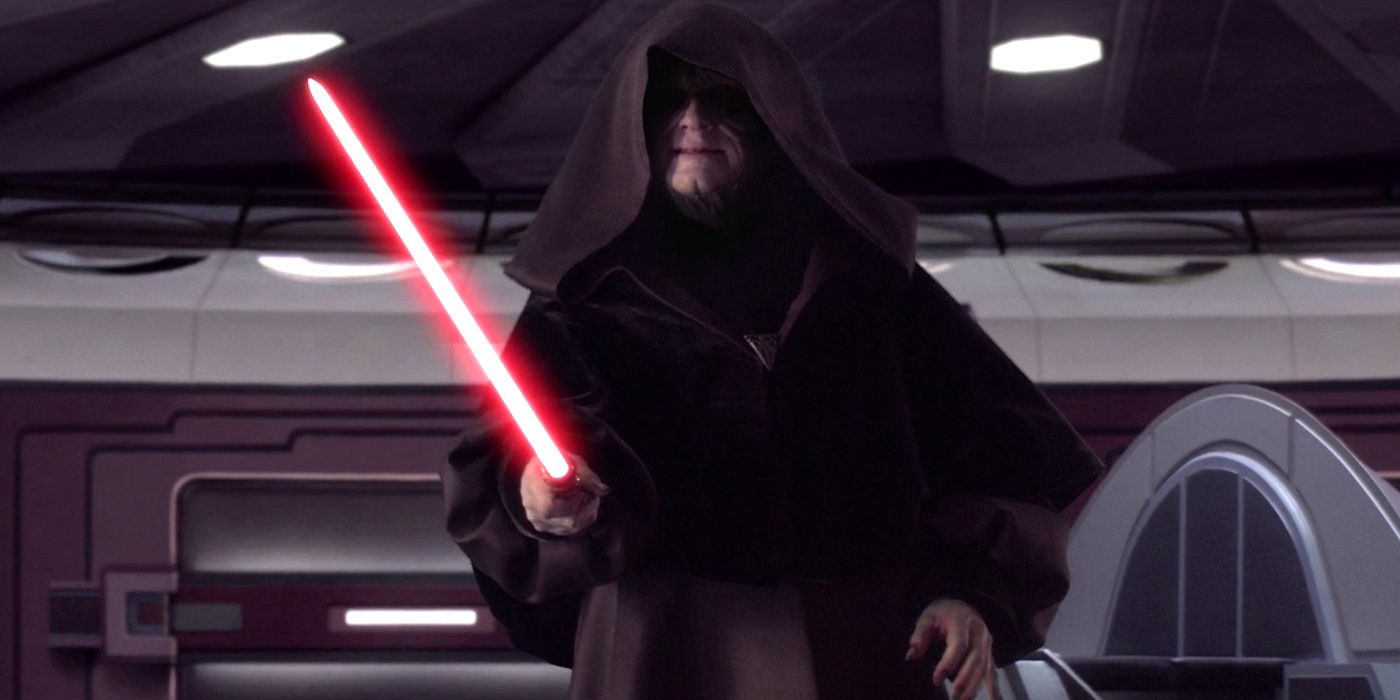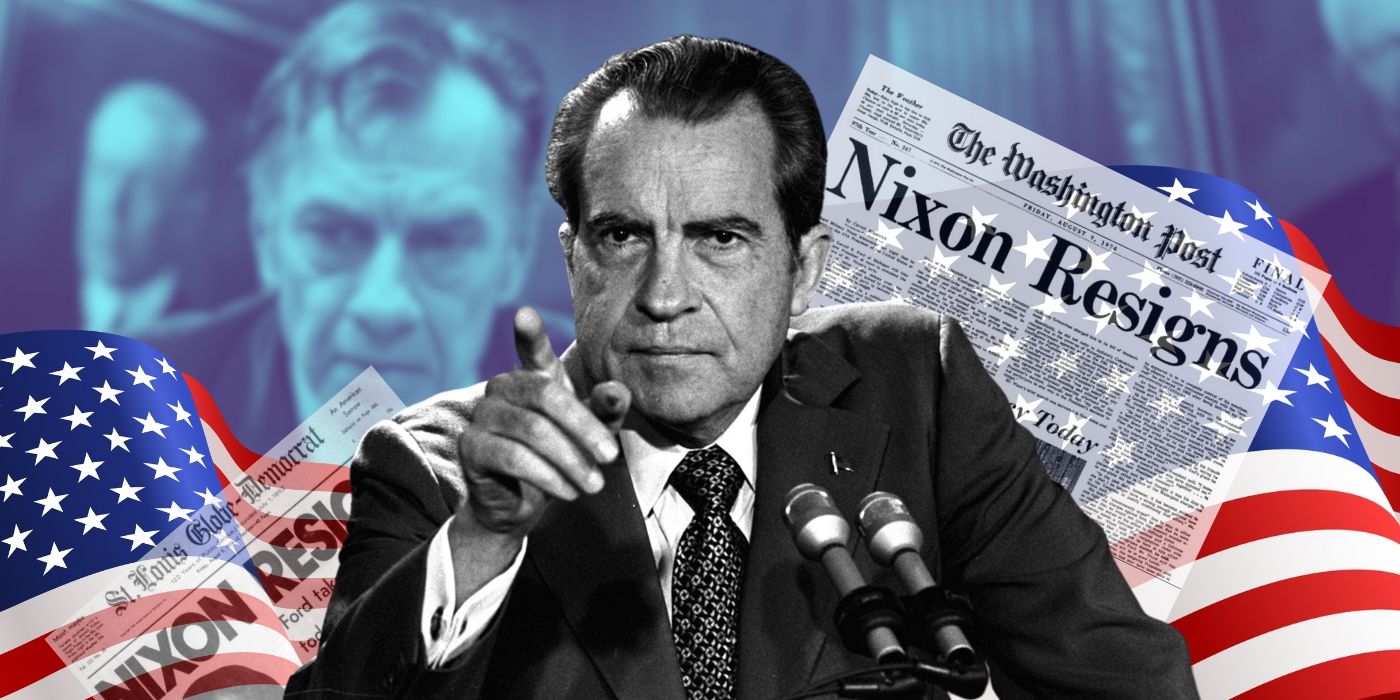The Big Picture
- Ian McDiarmid originally wanted to tone down Palpatine’s emotional scene, but George Lucas pushed for an over-the-top performance.
- Sith lords like Palpatine should express intense emotions, making the over-dramatic scene thematically fitting.
-
Revenge of the Sith
embraces melodrama, requiring wild, expressive performances from its characters.
Here’s a quick question: what is your favorite Emperor Palpatine (Ian McDiarmid) scene from any Star Wars movie? Or, at least, which Darth Sidious moment do you consider to be the most memorable? Chances are you will pick one of two of the campiest scenes in the prequels. More specifically, you will likely be torn between two scenes from Star Wars: Episode III – Revenge of the Sith. The scenes in question are, of course, the moment in which then Chancellor Palpatine encourages Anakin (Hayden Christensen) to chop off the head of Count Dooku (Christopher Lee), followed by the one in which the Sith lord faces off against Jedi master Mace Windu (Samuel L. Jackson). With iconic lines delivered just a notch over the top, these two moments are the ones most brought up by fans when they’re face to face with McDiarmid, according to the actor’s recent chat with Empire magazine commemorating 25 years of the movie that finally saw the transformation of young Anakin Skywalker into Darth Vader. But at least one of them could’ve looked a lot different.
That’s because McDiarmid was not 100% sure about director George Lucas‘ choices for the Mace Windu sequence. You know, that unforgettable emotional roller-coaster that goes from rage to despair to “Unlimited power?” Yeah, McDiarmid wanted to tone it down a little bit. “George kept hyping me up on that,” the actor recalls. “I was screaming, ‘Absolute power!’ I said, ‘Do you want me to do some quiet ones, because this is a bit much?’ George said, ‘No, go further, go further!’ So I did, and he seems to have kept most of it – there’s no holding back there.”
Now, there’s nothing wrong with an actor questioning their director about the correct choices for a scene. As a matter of fact, it is pretty common for performers to give their own input, and not at all rare for iconic sequences to come out of this kind of exchange. However, even though we have to admit that McDiarmid’s take on Palpatine’s ultimate moment would’ve probably been a beautiful display of quiet rage, Lucas had the right idea when he asked the actor to go completely overboard. It just makes sense for Palpatine to be totally unhinged, both thematically and story-wise. Furthermore, a subdued, sensibly cruel Palpatine would simply seem out of place in a movie with lines and performances as wild as Revenge of the Sith. Sure, only a Sith deals in absolutes, but if we have to choose between a quiet Palpatine and one that screams his lines at the top of his lungs, we’re better off with the latter.
Star Wars: Episode III – Revenge of the Sith
Three years into the Clone Wars, Obi-Wan pursues a new threat, while Anakin is lured by Chancellor Palpatine into a sinister plot to rule the galaxy.
- Release Date
- May 17, 2005
- Director
- George Lucas
- Runtime
- 140 minutes
- Main Genre
- Sci-Fi
- Writers
- George Lucas , John Ostrander , Jan Duursema
- Tagline
- The Saga is Complete
‘Revenge of the Sith’ Sees Palpatine at His Most Desperate
For starters, we have to consider what the “Ultimate power!” moment means for Palpatine in the overarching plot of Revenge of the Sith. In the scene, the Chancellor is shown both at his most desperate time and right at the height of his victory over the Republic and the Jedi. It all starts with Mace Windu arriving at Palpatine’s office with a group of nameless Jedi to arrest the Senator, who is on the verge of enacting a coup. The task force is quickly wiped out by Palpatine, with the sole exception of Windu, who eventually manages to disarm the Chancellor.
Anakin arrives at the scene to find his mentor on the ground, trying and failing to stop Windu with his Force lightning. In a moment that parallels one of the very first scenes of the movie, the aforementioned sequence in which Palpatine convinces Anakin to kill Count Dooku, Windu threatens to get off the Jedi path and execute the Chancellor right there, arguing that he’s just too dangerous to be left alive. Enraged, Anakin chops off one of Windu’s hands with his lightsaber, leaving him vulnerable to Palpatine’s attack. That’s where we get the “Power! Unlimited Power!” line, which McDiarmid cries out at full force before throwing the Jedi Master out the window. With him out of the way, it’s time to complete Anakin’s introduction to the dark side of the Force.
Palpatine’s plan is to hold a vote that would grant him power over the entire Senate and virtually turn him into an Emperor with, well, unlimited power. Windu is there to put a stop to it. When Anakin arrives at the Chancellor’s office, he finds him at his most vulnerable, finally exposed for what he truly is but unable to stand up for himself. Desperate, defeated, and deformed by Windu turning his death rays against him, Palpatine pleads for his life on the ground seconds before making Mace Windu fly over Coruscant. His emotions are already on edge, so it only makes sense for extreme despair to turn into extreme rage.
There’s also some joy thrown in there, for let’s not forget that Palpatine’s cry of “Unlimited power!” is a celebration of sorts. The Chancellor is celebrating not only his victory over the Republic as a whole pertaining to his political position but also his victory over the Jedi in control over Anakin Skywalker. At that point in Revenge of the Sith, Palpatine realizes that there’s nothing standing in his way to becoming Emperor, nor between him and his coveted pupil. He travels from one extreme to the other, from deep despair to ultimate triumph, and thus, it makes sense for his emotions to come out completely over the top.
Sith Lords Should Not Be Emotionally Collected in the ‘Star Wars’ Universe
Another point of Palpatine’s characterization that allows McDiarmid’s exaggerated performance to work in Revenge of the Sith is the fact that he is a Sith lord. Now, those who subscribe to the teachings of the dark side are often represented by fans as being cool and collected, nothing but calculating murderers without a single heated droplet in their blood. However, we have to remind ourselves that the Sith, unlike the Jedi, are not partial to keeping their emotions in check. On the contrary, they are usually pretty vocal about putting their feelings, particularly their hate and their fear, to good – or bad – use. We may like to think of a Sith lord as Darth Vader (James Earl Jones) calmly choking an officer in Star Wars: Episode VI – A New Hope, but they’re probably much closer to Kylo Ren (Adam Driver) throwing a temper tantrum in the sequel trilogy.
This is actually a point of contention between the Sith and the Jedi in Revenge of the Sith. Afraid for Padmé’s (Natalie Portman) life, Anakin is told by Yoda (Frank Oz) to practice detachment and let go of those he loves. Meanwhile, Palpatine encourages him to lean into his fears, promising him that the dark side holds the secret to stopping a person’s death. It’s a manipulation tactic, of course: Palpatine wants Anakin as his pupil, so he deceives him about the true power of the dark side. In the end, Padmé dies anyway. Still, there is also some practicality to enabling Anakin’s emotions, from his love for Padmé to his fear of losing her. After all, it is only by tapping into those feelings that he will be able to become a Sith lord with total control of the darkest aspects of the Force.
Anakin is not special in that sense. All Sith lords become Sith lords by allowing their deepest, most complex emotions to take over. Therefore, it doesn’t make sense for a Sith lord to be all calm and serene when tapping into his innermost feelings. It doesn’t make sense, thus, for a Sith lord to express these feelings in a collected, subdued manner. Thematically speaking, then, it is only appropriate for Palpatine, an extremely powerful Sith lord who killed his master in his sleep, to ride high on his most basic emotions. A quiet delivery would definitely have made the “Ultimate power!” line more chilling, but it wouldn’t be faithful to what the movie tells us about the Sith.
‘Revenge of the Sith’ Is All About the Melodrama
And, while we’re being honest, let’s face the fact that a more muted, somber Palpatine would just not fit the tone of Revenge of the Sith – or of the prequels in general, for that matter. With long-lost siblings and dramatic parent reveals, Star Wars, like most pulpy works of art, has a foot on the melodramatic. While the New Hollywood-inspired grittiness, alongside Irvin Kershner‘s (The Empire Strikes Back) and Richard Marquand‘s (Return of the Jedi) directing and Marcia Lucas‘ editing, helped keep the soap-opera-adjacent elements from the original films, things were a lot different in the prequels. For starters, George Lucas was at the helm of all three films, and his directorial sensibilities are a lot less subtle, as evidenced by McDiarmid’s interview with Empire. Meanwhile, in the editing room, Marcia’s voice was now completely absent. Furthermore, the early 2000s were a time of shiny blockbusters with a lot of green screens, which favored a brighter, more pasteurized look. So, when the prequels hit the screen, the Star Wars melodrama was on display for all who wanted to see it.
There is not a single performance that is quiet and subdued in Revenge of the Sith nor in Attack of the Clones and The Phantom Menace. The closest we get to it is Hayden Christensen’s inexpressive delivery, as the actor would take some time to become the performer Anakin Skywalker needed him to be. But even Christensen is frequently over-the-top, grimacing as he says the lines that finally drive his character to the dark side. The same can be said for Ewan McGregor‘s Obi-Wan Kenobi, who, despite being a Jedi Master, is not above screaming that he loved Anakin as a brother just before leaving him for dead. Why would Palpatine be any different? Just because he’s the villain?
In the end, George Lucas knew very well what kind of movie he was directing. Whether the prequels are good or bad is a discussion for another day, but we cannot deny the fact that they show personality. They are not in any way sterile films. Instead, they embrace their most melodramatic aspects, giving us characters that aren’t afraid to show emotions in the most wild, expressive, and easily recognizable forms. It’s definitely a look that demands a certain kind of performance from the actors involved in the project. McDiarmid wasn’t exactly wrong when he asked Lucas if he would prefer a quieter delivery. He was, however, thinking of another film.
Star Wars: Episode III – The Revenge of the Sith is available to stream at Disney+.
Watch on Disney+





